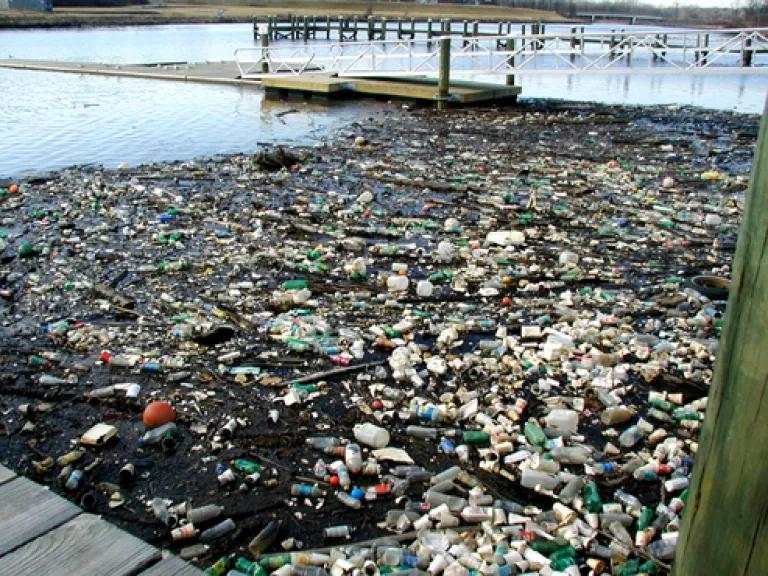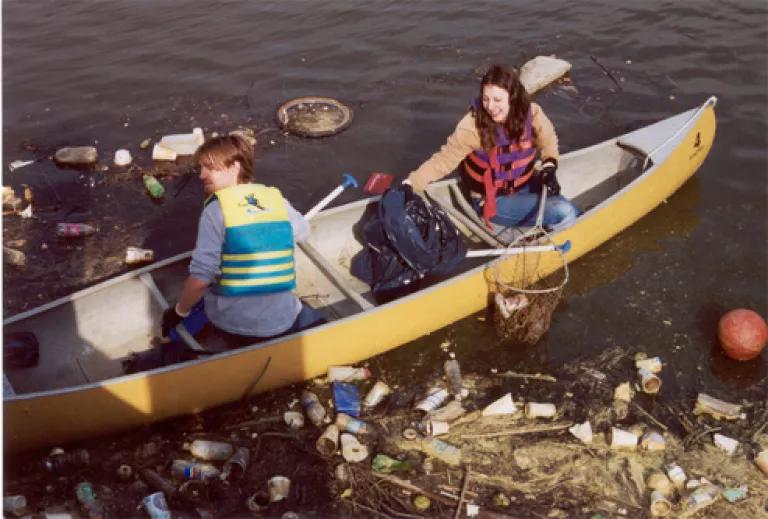
Almost every day, I bike to work. On the bike path, I get a close-up view of the Potomac River, which makes up the boundary between Washington, D.C., and Virginia. Though it has improved dramatically since the Clean Water Act passed in 1972, the Potomac is by no means free of pollution. In addition to the contaminants you can't see so easily, below is a picture of the kind of stuff that can get carried into the Potomac when it rains.
But I don't have to travel far to realize how lucky I am to be able to see the Potomac every day. On the other side of D.C. is the Anacostia River - an 8-mile long river that flows from suburban Maryland through the District, where it joins the Potomac. The Anacostia is, according to District officials, "aesthetically and chemically polluted." I'll say -- the river does not meet applicable water quality standards for biochemical oxygen demand, bacteria, organic chemicals, metals, total suspended solids, and oil and grease. In recent years, thanks to efforts by a host of community groups including NRDC, officials in Maryland and the District officially designated the river as impaired by trash, a dubious distinction it shares with a select number of water bodies around the country.
Here are some pictures of what being impaired by trash means, courtesy of my colleague Jim Connolly at the Anacostia Watershed Society.



But today brings very good news for people sick of seeing trash floating in the Anacostia. D.C. Councilmember Tommy Wells and a number of other Councilmembers are introducing the Anacostia River Cleanup and Protection Act of 2009, a bill that would do two basic things: first, it will place a nominal fee - five cents - on each single-use plastic or paper bag from a variety of stores; and second, it will take the revenue generated by the fee and put it in a fund to help pay for Anacostia cleanup, restoration, and education activities. This is a great idea - studies of trash in the Anacostia reveal that plastic bags are a major component of the trash load in the watershed, so creating an incentive to use fewer of them will help target a source of this pollution. In addition, the idea of using the money to directly address the Anacostia's problems makes perfect sense. One particular element of the program will be to help residents get reusable shopping bags, leading to a double-benefit: people don't have to pay for their bags, and throw-away bags aren't added to the waste stream. To learn more about the initiative, you can check out the website set up by the leaders of this effort.
But while this is a great step, the Anacostia won't be clean, or even trash-free, if it's adopted. The Council's bill must be part of a comprehensive solution that addresses trash pollution, along with improved recycling and street sweeping, litter law enforcement, and the use of trash traps and other equipment can be installed in storm drain inlets to catch debris. We've been working hard to make sure that the municipal sewer systems in the region will be required to undertake steps such as these as a condition of their permits to discharge into the River and its tributaries. Our friends at the Alice Ferguson Foundation also have spearheaded an effort to get local leaders to commit - in a "Trash Treaty," no less - to a trash-free Potomac watershed (including the Anacostia) by 2013, and that initiative has really advanced cooperation between jurisdictions on the trash issue.
Beyond trash pollution, the Anacostia needs our help in many ways, especially to deal with stormwater-related problems. My colleague Nancy Stoner lays out a prescription for solving the Anacostia's problems here. When we get serious about getting these important policies in place, I look forward to the experience of biking on the east side of the city as much as I already enjoy the west side.

